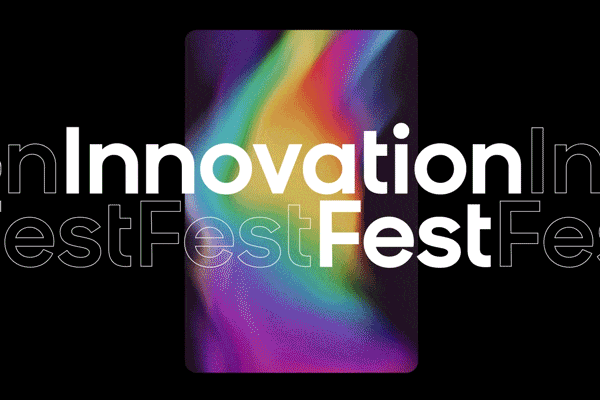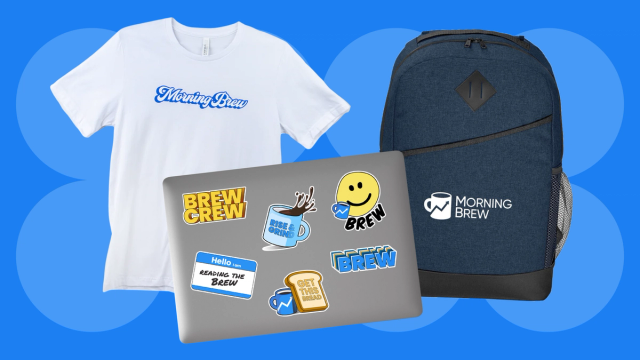SOCIAL & INFLUENCERS Armed with colorful makeup palettes and a Boston accent, Mikayla Nogueira has built her personal brand on being memorable. The beauty influencer has amassed more than 16 million followers on TikTok and 3 million on Instagram since she began posting in 2020—a following she attributes not only to the makeup and skin-care content she’s become known for, but also to more vulnerable posts where she discusses topics like dating, mental health, and family struggles. “There’s such a sense of loyalty,” Nogueira told us. “I really appreciate the people who have stuck by me in the last five years.” Now, she’s hoping to establish an even more memorable beauty line. On March 26, Nogueira released her skin-care brand, Point of View, the newest entry in the growing world of celebrity- and influencer-backed beauty brands. “Launching a brand is terrifying, especially when you’re a 26-year-old,” Nogueira said. With that said, she is optimistic that the products—which are designed to moisturize and prep the skin for makeup and feature simple, no-frills packaging—will stand out. The brand is rolling out with a social-first, DTC strategy to appeal to her followers, Ani Hadjinian, co-founder and CEO of Point of View, told us. Hadjinian, who has also worked at brands like Bobbi Brown and Augustinus Bader, said the response so far has been “unlike anything [she’s] seen,” with “astronomical” site traffic leading up to the release. The brand already has more than 500,000 followers across TikTok and Instagram, and a TikTok Shop, she said, is on the horizon. Nogueira, who worked at Ulta prior to becoming a full-time creator, is no stranger to brand work, with some of her brand sponsorships prompting controversies in the last five years. Owning her own brand will impact her external partnership strategy, she told us, but it won’t limit it altogether. We spoke with Nogueira about the marketing strategy behind Point of View and how she plans to balance being both an influencer and a new brand owner. Read more here about the new brand and how Nogueira plans to involve her fans.—KH | | |
|
|
Presented By Bloomreach We are at the dawning of a new era. Hint: It involves AI, and marketers and merchandisers may be getting a revamp in how they collab with it. Get the deets at Innovation Fest: Agentic Bloom, a virtual event hosted by Bloomreach. It’s coming up on May 7 at 11am EDT and will share a product vision, roadmap, and new features across their three products. This will include some huge updates in autonomous search and autonomous marketing. While other forms of AI have enhanced these e-commerce personalization workflows, making them incrementally faster or easier, these agents are designed to completely redefine how digital experiences are imagined and built. Join Bloomreach for Innovation Fest and see what the future of autonomous product discovery holds. |
|
AGENCIES Google isn’t just trying to get consumers to use generative AI when they’re searching for answers, shopping online, or using their Pixel devices. The tech giant is courting agencies by encouraging them to use AI when creating ads. The initiative, called “Impossible Ads,” debuted last year as part of Google’s AI Lighthouse program in an effort to bring adland into Google’s rapidly evolving suite of GenAI tools, according to Sadie Thoma, director of US B2B marketing at Google, and agencies like VaynerX and Dept. are using Google Gemini and other features to develop creative for clients. As the generative AI race continues to heat up, Google is onboarding other agencies, too, in a new cohort that Thoma said is set to debut at Cannes. “Last year, we said, ‘there’s so much AI hype, there’s so much talk around AI in the market,’” Thoma told Marketing Brew. “Wouldn’t it be interesting to take this Lighthouse program to the next level and essentially ask creative agencies, ‘What would it look like if you were to infuse Google AI and Gemini through your entire creative development process?’” Read more here about the program and its results.—JS | | |
|
|
RETAIL During a quarterly earnings call on March 4, Target reported that quarterly net sales declined 3.1%, while in February, when only the first three days were included in the quarter, CEO Brian Cornell stated that there was a “sales decline,” without being specific. Then Target executives all but led a singalong of “Peter Cottontail” on the call, mentioning Easter five times, specifically the windfall the company expected leading up to the holiday. “We had record sales [for] Valentine’s Day,” Rick Gomez, Target’s chief commercial officer, said during the call. “That bodes really well for Easter. So we are encouraged by that and looking forward to Easter.” What may not bode so well, however, is that the week of March 3 (which included Ash Wednesday, the start of Lent) marked the beginning of a national Lenten boycott of Target, which goes through Easter. - Spearheaded by Black clergy, the protest highlights that Target, after years of championing racial justice and social justice, rolled back its diversity, equity, and inclusion (DEI) program in January.
- The protest had a goal of signing up 100,000 consumers to participate; more than 150,000 had signed up as of March 20.
There has been much beard-stroking and teeth-gnashing over whether the one-day February 28 “economic boycott” against numerous companies was effective. But the Target Fast, as organizers refer to the protest, could pack a wallop. Besides the more than 40-day duration and the sheer number of participants, there’s the matter of Easter. If Target is banking on brisk sales at the same time legions of Christians vow to not shop there until after Easter, it begs the question: Has Target put all its eggs in the wrong basket? Continue reading on Retail Brew.—AAN | | |
|
|
FRENCH PRESS There are a lot of bad marketing tips out there. These aren’t those. Social: Reddit has rolled out a tool to simplify buying for SMBs on the platform Ad tech: AdExchanger unpacked Adalytics’s latest report alleging brands paid for bot traffic. Retail: What to know about H&M’s digital-clone models and what it could mean for marketing. The agentic revolution: Join Bloomreach for their upcoming event on May 7 at 11am EDT to learn about the future of AI. Register here to explore how agentic AI can impact personalization, workflows, and customer relationships.* *A message from our sponsor. |
|
|
METRICS AND MEDIA Stat: As much as $550 billion. That’s how much YouTube is worth, according to MoffettNathanson Principal Analyst Michael Nathanson; this year, it’s expected to be the largest media company by revenue, surpassing Disney. Quote: “The White Lotus not only uses our brand without permission, but in our view uses it on imagery that is troubling, does not reflect our values or who we are, and simply goes too far.”—Frank Tramble, Duke University’s VP for communications, marketing, and public affairs, in a statement to Bloomberg about the Duke T-shirt worn by a character in Season 3 of the HBO series Read: “Does The Knot have a “fake brides” problem?” (The New Yorker) |
|
|
|
ADVERTISE // CAREERS // SHOP // FAQ
Update your email preferences or unsubscribe .
View our privacy policy .
Copyright © 2025 Morning Brew Inc. All rights reserved.
22 W 19th St, 4th Floor, New York, NY 10011 |
|








